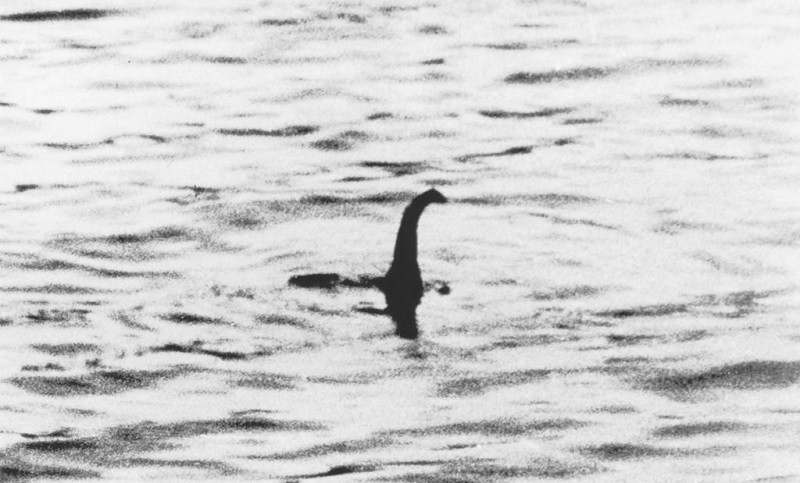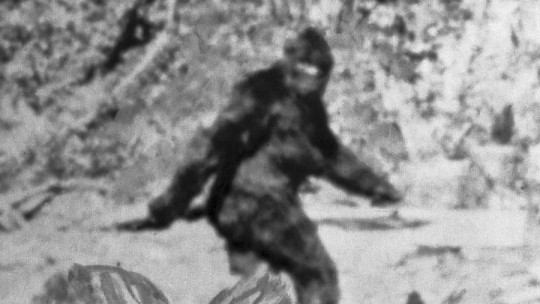Many people associate cryptozoology with a field of entertainment that ranges from fiction films to “mystery” programs, including horror stories told in front of a campfire. However, one thing has nothing to do with the other.
It is perfectly possible to enjoy certain horror stories or immerse yourself in mythological worlds without wanting to have anything to do with cryptozoology, since the latter is not a form of entertainment. In fact, its defenders believe that this is, above all, a way to obtain valuable information about the world in which we live; That is to say, its objective would be intellectual, and not personal enjoyment. But… Does cryptozoology really have the capacity to generate valuable knowledge? Here we will see why the answer to this question is a clear No.
What is cryptozoology?
When defining the meaning of the term “cryptozoology”, we can focus on its etymology, which in this case involves seeing what the ancient Greek words that make it up mean: cryptos, zoos and logos.
Starting from this basis, cryptozoology can be understood as the study of hypothetical animals that remain hidden , that is, creatures of which we would only know hints and whose existence would not yet have been fully incorporated into scientific knowledge. These creatures are usually called cryptids, and in most cases they are characterized as beings that for the moment are only part of popular knowledge.
In other words, Cryptids, by definition, have not been accepted by the scientific community as materially existing entities aside from legends, ideas of mythological origin or anecdotes magnified and exaggerated by the media. If we get philosophical, we could say that the ontological status of these animals is that of what the social sciences and humanities study, as inventions of human beings captured in stories, paintings, pieces of music, or even stories of creepypasta type.
Now, proponents of cryptozoology believe that cryptids do exist beyond the world of social constructs, that is, they grant cryptids a material ontological status outside of language, art and symbols. Besides, They point out that if its existence is not accepted by the scientific community it is not because of the impossibility of that happening (as they are only beings of legend), but because of supposed limitations in the research methods used.
Examples of cryptids
Some of the most famous cryptids are:

Is cryptozoology a science?
Cryptozoology is not a science; In most cases, what is behind it is pseudoscience and even in extreme cases one could even speak of parascience, as we will see.
Now, this does not mean that cryptids are described as entities with magical powers or properties that break natural laws. In many cases, these hypothetical animals look like living beings that could exist and are not very different from other well-known creatures for zoology. What makes cryptozoology not a science is not so much in the characteristics attributed to cryptids, but in its way of researching and conceiving the creation of knowledge in general. Here we will review these criticisms.
First of all, cryptozoology gives great importance to the descriptions of cryptids as they are transmitted through popular culture, that is, a lot of value is given to anecdotal evidence and the testimonies of people who claim to have seen to these animals, without always adopting a critical point of view and considering psychological and social conditions that can influence their version: suggestion, modification of memories, desire to have notoriety in the media, etc.
The main raw material of cryptozoology are the anecdotes that have been transmitted through word of mouth or have transcended the media without providing conclusive evidence of the existence of these creatures. The supposed material indications of the existence of cryptids, such as strange footprints in the snow or a blurry photograph, are taken as complements to these narratives, elements that can reinforce them, but not as elements that can be on equal terms. next to stories and legends.
That is to say, it is assumed that whoever has experienced these sightings, by saying that they have seen a cryptid, has more valuable information than anyone else can obtain, even though this does not have to be the case, given that if they existed, these cryptids would leave clues beyond those sightings.
In second place, cryptozoology manipulates theory so that the empirical can be integrated into it This implies overlooking that science does not only consist of accumulating empirical knowledge, but that it must be able to generate fertile hypotheses given a given degree of scientific and technological development, and must give rise to ideas that do not contradict each other or with the that come from other scientific disciplines.
For example, the idea that there are one or several giant reptiles like plesiosaurs in Loch Ness conflicts with several elements of scientific knowledge: that very large animals need large areas to live and perpetuate themselves as a species, that they do not There is no plesiousaur fossil after the Cretaceous-Paleogene mass extinction (66 million years ago), that aquatic reptiles need to come to the surface to breathe several times a day, etc.
Third, cryptozoology It does not have mechanisms to get rid of hypotheses, considering them invalid due to the lack of conclusive evidence We must not forget that the fact of not proving a hypothesis after testing it after one or several investigations also provides scientifically relevant knowledge; But since one of the characteristics of cryptids is that they “remain hidden”, cryptozoology invents ad hoc arguments to justify the fact that they have not yet been discovered, even if that means ignoring Ockham’s razor and raises many more questions than it is supposed to. supposedly solves.
For example, the idea that a species of large primate similar to gorillas lives in the forests of North America conflicts with the fact that that area of the American continent is populated by more than 300 million people, many of them. who carry smartphones with cameras, and that the forests are full of photo-trapping cameras that film automatically when they detect movement.
And the cases of parascience?
In certain cases, cryptozoology does not even try to resemble the scientific For example, when their explanations include conspiracy theories that portray “scientists” as an elite that deliberately tries to “hide the truth.” In these cases, we can say that it becomes a parascience, by detaching itself from the pretension of consolidating itself as a science.
Something similar occurs in those cases in which the cryptids supposedly investigated have magical powers or defy the laws of nature However, it is debatable whether these creatures can be considered animals, since this concept, that of “animal”, has become part of the modern evolutionary synthesis, and that implies accepting that they are subject to the principles of biological evolution and that They have a common origin with the rest of the representatives of that taxon. Therefore, from another point of view, it could be said that cryptozoology, by definition, can only talk about supposed animals, and not about supernatural entities.
Does that mean that the search for new animal species is cryptozoology?
Not at all. It is perfectly valid to pay attention to the testimonies of people who claim to have seen animals that have not been described before by zoology ; In fact, this is how some species were discovered, such as gorillas.
However, this information must be critically analyzed in light of the rest of the knowledge already available. It is not the same to assume that giants may exist in Rome in the 1st century BC as it is today, and cryptozoology could not exist where zoology did not yet exist as such.









